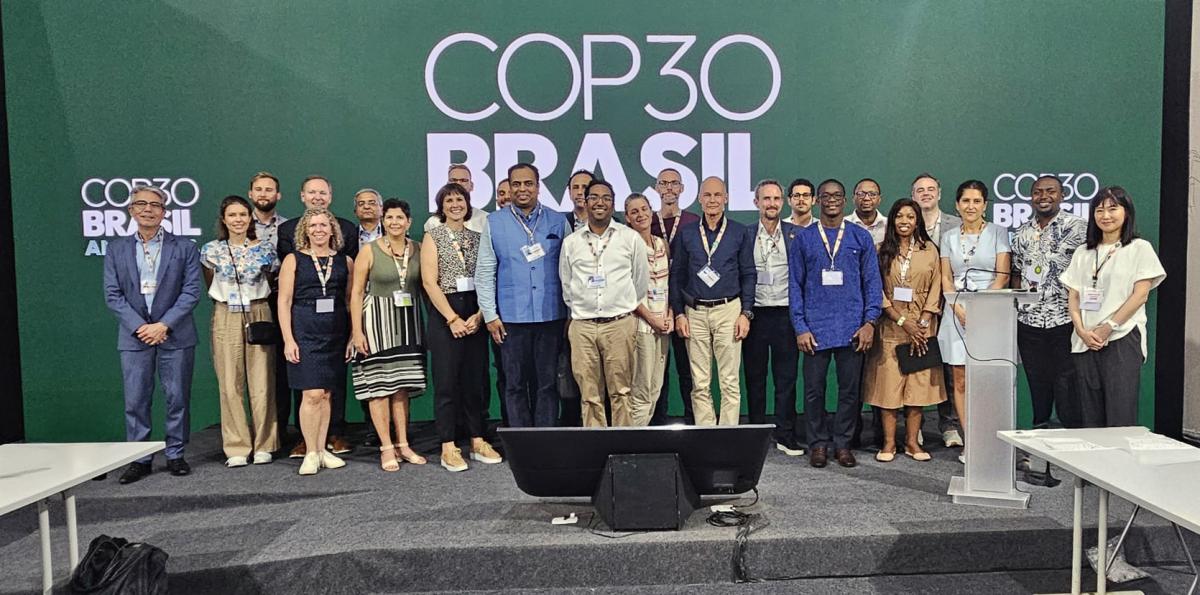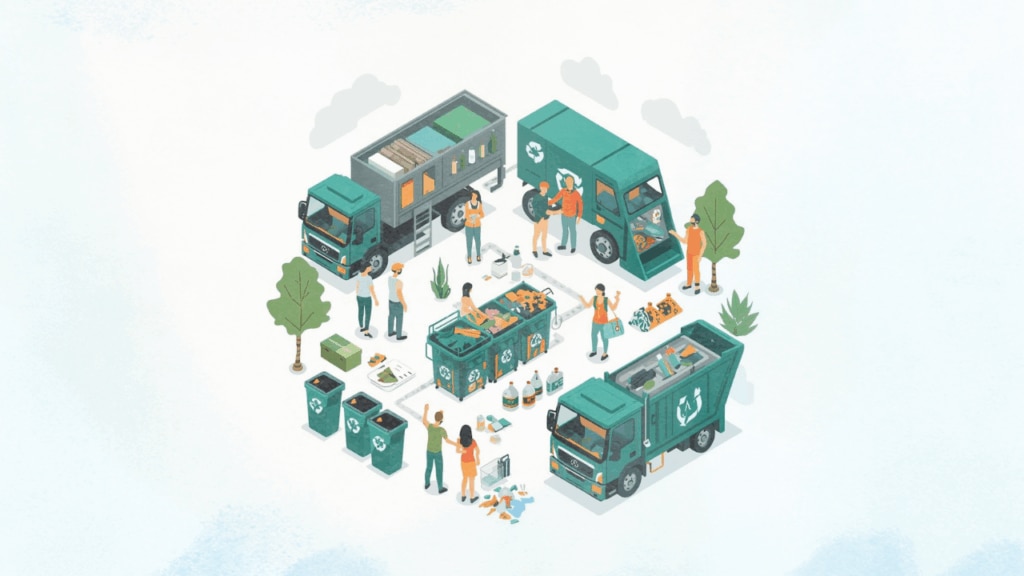Sustainable Tourism In The Cook Islands: A Move To Preserve Natural Beauty – Travel And Tour World

Report on Sustainable Tourism in the Cook Islands and Alignment with Sustainable Development Goals (SDGs)
Introduction
The Cook Islands, a self-governing territory in the South Pacific Ocean, has established itself as a global exemplar of sustainable tourism. By strategically balancing economic development with environmental preservation and cultural integrity, the nation provides a tangible model for achieving several United Nations Sustainable Development Goals (SDGs). This report analyzes the policies and principles that underpin the Cook Islands’ success, with a specific focus on their contributions to SDGs 8, 11, 12, 14, and 17.
A National Framework for Sustainable Development
Policy on Controlled Development and Urban Planning (SDG 11)
The Cook Islands’ approach to tourism is fundamentally shaped by a long-standing policy designed to protect its natural and cultural heritage, directly supporting SDG 11: Sustainable Cities and Communities. A key regulation, in place since 1965, prohibits the construction of any building taller than a coconut tree. This measure has been critical in:
- Preventing the overdevelopment and visual pollution common in many tourist destinations.
- Preserving the natural landscapes and vistas that are integral to the islands’ appeal.
- Safeguarding the nation’s cultural heritage by maintaining a low-impact built environment.
- Ensuring that development is inclusive, safe, resilient, and sustainable.
The Guiding Principle of *Mana Tiaki*
Guardianship and Responsible Consumption (SDG 12 & SDG 14)
The core of the Cook Islands’ sustainability ethos is the principle of Mana Tiaki, which translates to “guardianship with a sacred purpose.” This philosophy mandates a deep-seated responsibility to protect the environment and influences all aspects of life, aligning closely with SDG 12: Responsible Consumption and Production and SDG 14: Life Below Water.
- Sustainable Resource Management: The principle promotes careful stewardship of all natural resources, from land to sea. This ensures that consumption patterns are sustainable and that the natural resource base is preserved for future generations.
- Conservation of Marine Resources: In alignment with SDG 14, local communities practice sustainable fishing methods, such as rotational fishing systems. This practice prevents overfishing, maintains healthy fish stocks, and protects marine biodiversity, which is vital for both the local economy and the tourism sector.
Economic Model: Low-Impact, High-Value Tourism
Fostering Decent Work and Sustainable Economic Growth (SDG 8)
The Cook Islands has successfully cultivated a tourism model that prioritizes quality over quantity, contributing directly to SDG 8: Decent Work and Economic Growth. By focusing on low-impact tourism, the nation has achieved sustained and inclusive economic growth without compromising environmental integrity.
- Economic Contribution: Tourism is a significant driver of the nation’s GDP, demonstrating that a sustainable approach can be economically prosperous.
- Attracting Responsible Tourists: The commitment to sustainability attracts a high-value market of eco-conscious travelers who are willing to invest in authentic and environmentally responsible experiences.
- Sustainable Economic Practices: The model decouples economic growth from environmental degradation, a key target of SDG 8, by offering eco-friendly resorts, nature-based tours, and culturally immersive activities that support local communities.
A Replicable Model for Global Partnerships
Inspiring Global Action (SDG 17)
The success of the Cook Islands serves as an influential case study for other nations, particularly small island developing states, facing similar pressures from the global tourism industry. This leadership role promotes SDG 17: Partnerships for the Goals by sharing knowledge and best practices for sustainable development.
Key Lessons for Global Tourism:
- Policy is Paramount: Strong, long-term government policies are essential to guide sustainable development and prevent unchecked commercialization.
- Cultural Integration: Embedding principles like Mana Tiaki into the national identity ensures community-wide commitment to sustainability.
- Economic and Environmental Synergy: Protecting natural assets is not a barrier to economic growth but can become a unique selling proposition that drives a resilient, high-value economy.
Conclusion
The Cook Islands demonstrates a highly effective and integrated approach to sustainable development. Through deliberate policy-making, a culture of environmental guardianship, and a focus on a high-value, low-impact economic model, the nation has successfully aligned its tourism industry with key Sustainable Development Goals. This framework not only protects its pristine natural environment but also ensures long-term economic prosperity and serves as a powerful, actionable model for the future of global tourism.
1. Which SDGs are addressed or connected to the issues highlighted in the article?
SDG 8: Decent Work and Economic Growth
- The article highlights that tourism is a “major driver of the economy” and accounts for a “substantial portion of the Cook Islands’ GDP.” It discusses how their sustainable approach creates a “thriving tourism economy” and ensures “prosperity for generations to come,” directly connecting to the goal of promoting sustained, inclusive, and sustainable economic growth.
SDG 12: Responsible Consumption and Production
- The central theme of the article is the Cook Islands’ model for “sustainable tourism.” It describes their focus on “low-impact tourism,” “eco-conscious tourism offerings,” and a global shift towards “responsible tourism.” This directly aligns with the goal of ensuring sustainable consumption and production patterns.
SDG 14: Life Below Water
- The article explicitly mentions the protection of marine resources through the principle of Mana Tiaki. It details “sustainable fishing practices,” including a “rotational fishing system” to ensure “fish stocks remain abundant” and to avoid depleting marine resources. This shows a clear commitment to conserving and sustainably using the oceans and marine resources.
SDG 15: Life on Land
- The article emphasizes the preservation of the islands’ terrestrial environment. It points to the policy that “forbids any building taller than a coconut tree” to “preserve the stunning vistas and prevent overdevelopment.” This, along with “careful land management” and protecting “pristine natural beauty” and “lush landscapes,” connects directly to protecting and restoring terrestrial ecosystems.
2. What specific targets under those SDGs can be identified based on the article’s content?
SDG 8: Decent Work and Economic Growth
- Target 8.9: “By 2030, devise and implement policies to promote sustainable tourism that creates jobs and promotes local culture and products.” The article is a case study of this target in action. The Cook Islands have implemented a unique tourism model based on the local cultural principle of Mana Tiaki, which has successfully driven their economy while preserving their heritage.
SDG 12: Responsible Consumption and Production
- Target 12.b: “Develop and implement tools to monitor sustainable development impacts for sustainable tourism…” The entire approach of the Cook Islands, guided by the Mana Tiaki principle and strict building codes, serves as a framework for managing and monitoring the impacts of tourism to ensure it remains sustainable.
SDG 14: Life Below Water
- Target 14.2: “By 2020, sustainably manage and protect marine and coastal ecosystems to avoid significant adverse impacts…” The article describes how the islanders are “dedicated to maintaining harmony with the natural environment” and the ocean.
- Target 14.4: “By 2020, effectively regulate harvesting and end overfishing… to restore fish stocks…” The “rotational fishing system” and the practice of fishing “only for what is needed” are direct examples of regulating harvesting to prevent overfishing and maintain fish stocks.
SDG 15: Life on Land
- Target 15.1: “By 2020, ensure the conservation, restoration and sustainable use of terrestrial and inland freshwater ecosystems and their services…” The commitment to “preserving its pristine natural beauty” and “careful land management” reflects this target.
- Target 15.5: “Take urgent and significant action to reduce the degradation of natural habitats…” The strict policy preventing buildings from being taller than a coconut tree is a significant action to prevent the degradation of the natural landscape and habitats caused by overdevelopment.
3. Are there any indicators mentioned or implied in the article that can be used to measure progress towards the identified targets?
SDG 8 & 12 (Targets 8.9 & 12.b)
- Indicator: Implementation of a national sustainable tourism strategy. The article describes the Cook Islands’ entire tourism model, based on the Mana Tiaki principle and low-impact development, as their implemented strategy. The article notes that this strategy attracts “travellers who are eager to support environmentally responsible destinations.”
- Indicator: Tourism’s contribution to GDP. The article mentions that “Tourism accounts for a substantial portion of the Cook Islands’ GDP,” which can be used as a metric to measure the economic success of their sustainable model.
SDG 14 (Targets 14.2 & 14.4)
- Indicator: Implementation of sustainable fishing management plans. The article explicitly describes the “rotational fishing system” and the cultural practice of fishing “only for what is needed” as their management plan to ensure fish stocks remain abundant.
SDG 15 (Targets 15.1 & 15.5)
- Indicator: Policies to protect natural landscapes. The law that “forbids any building taller than a coconut tree” is a specific, measurable policy indicator aimed at preventing habitat degradation from overdevelopment.
- Indicator: Frameworks for sustainable land management. The guiding principle of Mana Tiaki (“guardianship with a sacred purpose”) is mentioned as the core philosophy influencing “careful land management” and the community’s interaction with their surroundings.
4. Table of SDGs, Targets, and Indicators
| SDGs | Targets | Indicators Identified in the Article |
|---|---|---|
| SDG 8: Decent Work and Economic Growth | 8.9: Promote sustainable tourism that creates jobs and promotes local culture. |
|
| SDG 12: Responsible Consumption and Production | 12.b: Develop and implement tools to monitor sustainable development impacts for sustainable tourism. |
|
| SDG 14: Life Below Water | 14.2: Sustainably manage and protect marine and coastal ecosystems. 14.4: Effectively regulate harvesting and end overfishing. |
|
| SDG 15: Life on Land | 15.1: Ensure the conservation and sustainable use of terrestrial ecosystems. 15.5: Reduce the degradation of natural habitats. |
|
Source: travelandtourworld.com

What is Your Reaction?
 Like
0
Like
0
 Dislike
0
Dislike
0
 Love
0
Love
0
 Funny
0
Funny
0
 Angry
0
Angry
0
 Sad
0
Sad
0
 Wow
0
Wow
0















































































